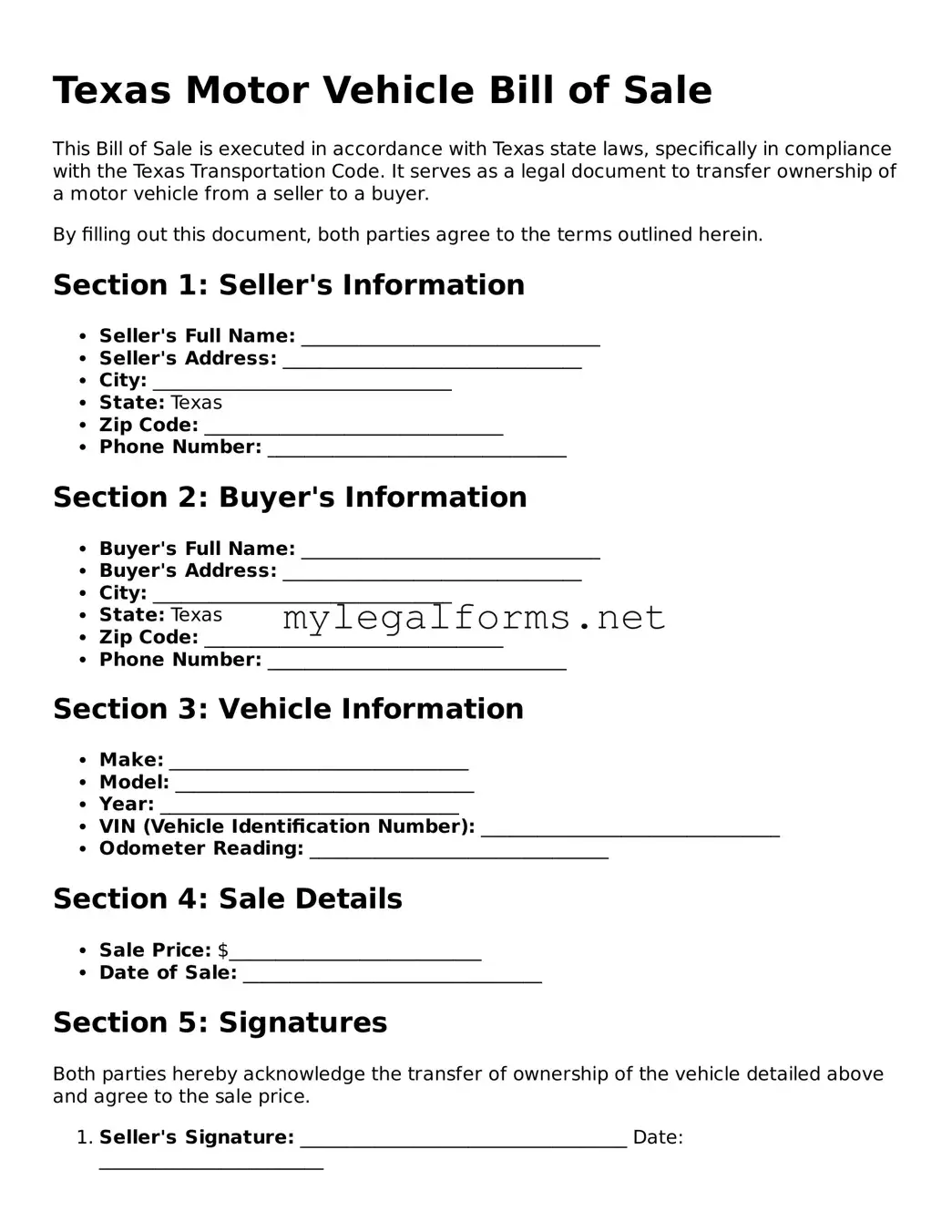Texas Motor Vehicle Bill of Sale
This Bill of Sale is executed in accordance with Texas state laws, specifically in compliance with the Texas Transportation Code. It serves as a legal document to transfer ownership of a motor vehicle from a seller to a buyer.
By filling out this document, both parties agree to the terms outlined herein.
Section 1: Seller's Information
- Seller's Full Name: ________________________________
- Seller's Address: ________________________________
- City: ________________________________
- State: Texas
- Zip Code: ________________________________
- Phone Number: ________________________________
Section 2: Buyer's Information
- Buyer's Full Name: ________________________________
- Buyer's Address: ________________________________
- City: ________________________________
- State: Texas
- Zip Code: ________________________________
- Phone Number: ________________________________
Section 3: Vehicle Information
- Make: ________________________________
- Model: ________________________________
- Year: ________________________________
- VIN (Vehicle Identification Number): ________________________________
- Odometer Reading: ________________________________
Section 4: Sale Details
- Sale Price: $___________________________
- Date of Sale: ________________________________
Section 5: Signatures
Both parties hereby acknowledge the transfer of ownership of the vehicle detailed above and agree to the sale price.
- Seller's Signature: ___________________________________ Date: ________________________
- Buyer's Signature: ___________________________________ Date: ________________________
This document should be kept by both parties as a record of the transaction.
